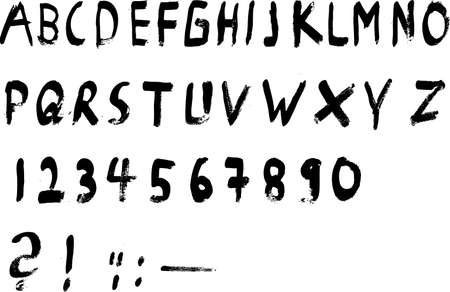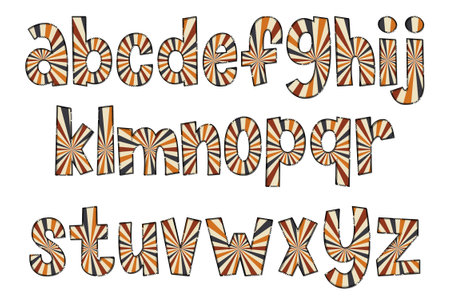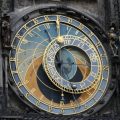Introduction to Elder Futhark and its Historical Context
When delving into the linguistic fabric of early Northern Europe, the Elder Futhark runic alphabet stands as a compelling testament to cultural exchange, migration, and identity. The Elder Futhark—named after its first six letters: F, U, Þ (Th), A, R, and K—emerged around the 2nd century CE, most likely among Germanic tribes residing in what is now Denmark and northern Germany. This script comprises 24 distinct characters, each bearing not only phonetic value but also symbolic meaning rooted in myth and ritual. Over the following centuries, Elder Futhark inscriptions spread across Scandinavia, continental Europe, and notably found their way to the British Isles. In Britain’s archaeological record, runic artefacts are relatively rare yet highly significant; they illuminate a period of intense contact between migrating Anglo-Saxons, Norse settlers, and indigenous Britons. The journey of these runes from continental Europe to British shores reveals much about patterns of trade, warfare, settlement, and the subtle interplay of language and power. Understanding the origins and diffusion of Elder Futhark is thus essential for interpreting both the linguistic evolution and broader socio-cultural dynamics within early medieval Britain.
2. Deciphering the Script: Linguistic Features of Elder Futhark
When examining runic inscriptions unearthed across Britain, one encounters the fascinating script of Elder Futhark—a writing system that predates the more familiar Anglo-Saxon runes and Old English scripts. To truly appreciate its significance in British archaeology, we must delve into its phonological, morphological, and orthographic characteristics, which set it apart from both later runic systems and the evolving scribal traditions of the Isles.
Phonological System: Sounds Encoded in Stone
Elder Futhark consists of 24 distinct runes, each representing a sound or a set of related sounds. Unlike the expanded runic alphabets that came later with the spread of Germanic languages in Britain, Elder Futhark captures an earlier stage of Proto-Germanic phonology. For example, certain sounds such as þ (thorn) for “th” are consistently represented, while later scripts diversified these further. The table below outlines some notable phoneme-to-rune correspondences:
| Rune | Phoneme | Modern Example |
|---|---|---|
| ᚠ (fehu) | /f/ | fox |
| ᚦ (thurisaz) | /θ/ (“th”) | thin |
| ᛃ (jera) | /j/ (“y”) | yes |
Morphological Simplicity: Short Inscriptions, Big Meanings
Elder Futhark inscriptions discovered in Britain are often brief—sometimes no more than a name or word. Morphologically, the script typically avoids complex inflectional endings found in Old English. This simplicity hints at its primary usage: marking ownership, commemoration, or magical intent rather than detailed narrative. As later runic and manuscript traditions developed, greater morphological complexity emerged to reflect evolving language structures.
Orthographic Distinctions: Carving Out Identity
The orthography of Elder Futhark is strikingly linear and angular—a necessity for carving on wood or stone. Its lack of standardised word division stands out; spaces between words were rare, challenging modern decipherment. Additionally, there was little effort to represent vowel length or diphthongs distinctly, whereas later scripts adapted to growing linguistic nuance. Below is a comparison between Elder Futhark and later Anglo-Saxon futhorc features:
| Feature | Elder Futhark | Anglo-Saxon Futhorc |
|---|---|---|
| Number of Runes | 24 | 28–33 |
| Word Separation | Sparse/Absent | Sporadic but present in some cases |
| Diphthong Representation | No dedicated runes | New runes introduced for vowels/diphthongs |
Linguistic Legacy: An Enduring Enigma in British Contexts
The unique linguistic traits of Elder Futhark make it a critical key to understanding early contacts and cultural exchanges in prehistoric Britain. Its simplicity and conservative character offer a snapshot of language before the transformations wrought by migration, conquest, and Christianisation—a compelling reminder that our island’s story is inscribed not only in parchment but in stone itself.

3. Runic Inscriptions in the British Archaeological Record
One of the more intriguing aspects of early medieval Britain lies in its archaeological record, where artefacts inscribed with Elder Futhark runes occasionally emerge from the soil. These discoveries, while rare compared to their Scandinavian counterparts, offer a tantalising glimpse into the early contact and cultural interplay between migrating Germanic peoples and the indigenous communities of Britain. Sites such as the Isle of Man, Kent, and Yorkshire have produced notable examples, often in funerary or ritual contexts. Take, for example, the 5th-century cremation urns from East Anglia bearing runic inscriptions; these artefacts not only testify to the presence of Germanic settlers but also hint at a syncretic blending of local and continental traditions.
The archaeological context is crucial. Runic finds are typically associated with grave goods or objects of personal adornment—brooches, swords, or amulets—suggesting that runes served both practical and symbolic purposes. The use of Elder Futhark on these items may have signified ownership, spiritual protection, or commemoration. Moreover, their distribution maps closely onto areas known for early Anglo-Saxon settlement, reinforcing narratives constructed from place names and historical sources. Each inscription becomes a touchstone for reconstructing the patchwork of identities that emerged as Roman Britain gave way to new polities.
The significance of these finds cannot be overstated. They provide concrete evidence for cross-cultural exchanges—material proof that linguistic ideas travelled alongside people and goods. More than mere curiosities, runic inscriptions are portals to understanding how language and identity were negotiated in Britain’s formative centuries. In this way, British archaeology not only preserves physical relics but also enables us to trace the subtle imprints of linguistic transformation within the broader sweep of European history.
4. Challenges in Interpretation: Translation and Preservation
The interpretation of Elder Futhark inscriptions in the British archaeological context is fraught with complexity, shaped by both the physical condition of runic artefacts and the intricate subtleties of ancient language. Archaeologists and linguists alike encounter a series of hurdles when attempting to translate these early Germanic scripts, often balancing on a knife-edge between scholarly deduction and speculative guesswork.
Textual Damage and Fragmentation
A significant challenge lies in the very state of the artefacts themselves. Many runic objects unearthed across Britain—be it weaponry, jewellery, or stone monuments—have suffered from centuries of weathering, corrosion, or breakage. This results in incomplete inscriptions, missing runes, or eroded surfaces, making direct translation an exercise in educated reconstruction rather than precise science.
Common Types of Textual Damage
| Type of Damage | Impact on Interpretation |
|---|---|
| Erosion | Loss of surface detail; some runes may be illegible |
| Fragmentation | Inscription split across multiple pieces; context lost |
| Corrosion | Chemical alteration obscures original markings |
Ambiguity and Linguistic Nuances
Even when inscriptions are relatively intact, Elder Futhark itself presents interpretive ambiguities. Runes can have multiple phonetic or symbolic values depending on their position within a word or inscription, and dialectal differences further muddy the waters. Moreover, some terms or phrases may have been culturally specific to early medieval communities—meanings that do not always translate neatly into modern English or even contemporary Old English dialects used in Britain at the time.
Cultural and Contextual Pitfalls
- Runes as magical or ritual symbols: Not all inscriptions were intended as straightforward messages; some had esoteric functions.
- Bilingualism and code-switching: Artefacts may blend Old Norse, Old English, or even Latin influences, reflecting the multicultural tapestry of early Britain.
Preservation and Conservation Dilemmas
British archaeologists are tasked not only with deciphering runes but also with ensuring their preservation for future study. The UK’s damp climate poses ongoing risks to organic materials like wood or bone inscribed with runes, while stone monuments face threats from pollution and biological growths such as lichen. Conservation strategies require a delicate balance: interventions must stabilise artefacts without introducing chemicals or treatments that might obscure microscopic linguistic evidence.
Conservation Approaches in Britain
| Material Type | Conservation Method |
|---|---|
| Stone | Careful cleaning, environmental control to prevent lichen/moss growth |
| Metal | Desalination, protective coatings to inhibit corrosion |
| Wood/Bone | Anoxic storage, consolidation with reversible adhesives |
The intersection of translation pitfalls and preservation challenges means that understanding Elder Futhark in British archaeology is a truly multidisciplinary endeavour. Only through collaboration between linguists, conservators, and field archaeologists can we hope to unveil the stories hidden within these ancient runes—stories that continue to shape our understanding of early medieval Britain.
5. Elder Futhark in British Cultural Memory
The enduring allure of Elder Futhark runes is keenly felt in contemporary British culture, where their enigmatic forms and ancient associations continue to inspire curiosity and creativity. While the direct archaeological evidence for Elder Futhark in Britain remains relatively scarce compared to Scandinavia or continental Europe, the resonance of runic heritage has become woven into the cultural fabric of the nation in surprising ways.
Modern mythologies and literature are perhaps the most visible arenas for the revival and reinterpretation of runic motifs. From the works of J.R.R. Tolkien—whose deep philological interests were famously influenced by Old English and Norse sources—to the proliferation of fantasy novels, games, and television series, runes frequently symbolise mystery, power, or ancestral wisdom. British writers and artists have often drawn on runic scripts as visual shorthand for the arcane or otherworldly, reinforcing their cultural significance beyond strict archaeological contexts.
On a more grounded level, local museums across Britain have embraced runic heritage through carefully curated exhibits that blend artefacts with interactive displays. Institutions such as the British Museum or regional history centres use runic inscriptions to help visitors connect with the lived experiences of early medieval communities. The tactile act of tracing a rune or deciphering a short inscription offers a tangible link to Britain’s layered past, making abstract concepts like ‘linguistic heritage’ come alive for audiences young and old.
Educational initiatives also play a pivotal role in sustaining interest in Elder Futhark within Britain. Workshops on runology, living history events, and school projects encourage hands-on engagement with ancient scripts, fostering appreciation for linguistic diversity and historical complexity. These activities often highlight how language change, migration, and cultural contact shaped Britain’s identity—a narrative that resonates deeply in an increasingly interconnected world.
Ultimately, Elder Futhark serves as both a window into ancient worlds and a mirror reflecting contemporary British values—curiosity about origins, respect for multicultural influences, and an enduring fascination with mysteries yet unsolved. In this way, the study of runes extends well beyond academia; it becomes part of a shared cultural memory that invites all Britons to participate in the ongoing story of language and identity.
6. Cross-Disciplinary Perspectives: Archaeology Meets Linguistics
In recent years, the field of British archaeology has increasingly recognised the invaluable role of linguistics in decoding the mysteries of Elder Futhark runic inscriptions. By moving beyond traditional excavation and artefact analysis, researchers are embracing a truly cross-disciplinary approach that fuses linguistic expertise with archaeological practice. This integration is not merely academic; it is essential for achieving a nuanced understanding of how runes were used, adapted, and interpreted by early inhabitants of Britain. Recent collaborations between UK-based archaeologists and linguists have resulted in ground-breaking studies—such as those at the Lunnasting Stone in Shetland and the Caistor St Edmund site—wherein phonological analysis, comparative etymology, and contextual archaeological data are synthesised to reconstruct lost narratives and cultural exchanges. These partnerships highlight the benefits of drawing on diverse methodologies: for instance, linguistic analysis can challenge assumptions about inscription dating or regional dialects, while archaeological context grounds interpretations in tangible evidence. The result is a richer, more holistic narrative that respects both the technicalities of ancient scripts and their sociocultural significance. As such, this cross-pollination is not just a methodological trend but a necessity for advancing our collective understanding of runic heritage across Britain.


